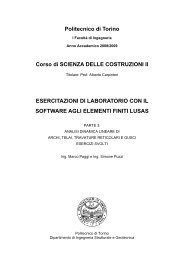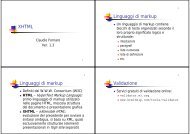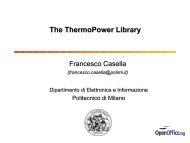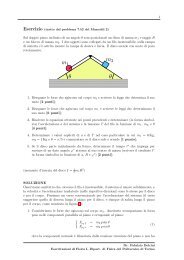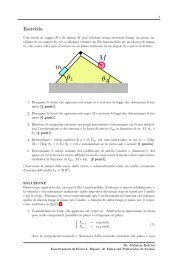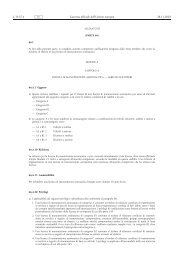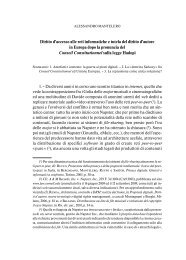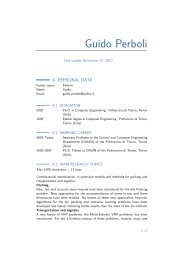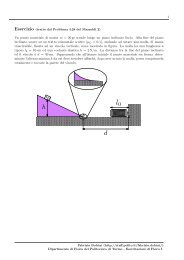The ITER toroidal field model coil project
The ITER toroidal field model coil project
The ITER toroidal field model coil project
Create successful ePaper yourself
Turn your PDF publications into a flip-book with our unique Google optimized e-Paper software.
190 A. Ulbricht et al. / Fusion Engineering and Design 73 (2005) 189–327<br />
the leadership of European Fusion Development Activity/Close Support Unit (EFDA/CSU), Garching, in collaboration with the<br />
European superconductor laboratories and the European industry. <strong>The</strong> TFMC was developed and constructed in collaboration<br />
with the European industry consortium (AGAN) and Europa Metalli LMI supplied the conductor. <strong>The</strong> TFMC was tested in the<br />
test phase I as single <strong>coil</strong> and in phase II in the background <strong>field</strong> of the EURATOM LCT <strong>coil</strong> in the TOSKA facility of the<br />
Forschungszentrum Karlsruhe. In phase I, the TFMC achieved an <strong>ITER</strong> TF <strong>coil</strong> relevant current of about 80 kA and further<br />
representative test results before the end of the EDA. In the more complex test phase II, the <strong>coil</strong> was exposed to <strong>ITER</strong> TF<br />
<strong>coil</strong> relevant mechanical stresses in the winding pack and case. <strong>The</strong> tests confirmed that engineering design principles and<br />
manufacturing procedures are sound and suitable for the <strong>ITER</strong> TF full size <strong>coil</strong>s. <strong>The</strong> electromagnetic, thermo hydraulic and<br />
mechanical operation parameters agree well with predictions. <strong>The</strong> achieved Lorentz force on the conductor was about 800 kN/m.<br />
That has been equivalent to the Lorentz forces in <strong>ITER</strong> TF <strong>coil</strong>s.<br />
© 2005 Elsevier B.V. All rights reserved.<br />
Keywords: <strong>ITER</strong>; TFMC; EDA<br />
1. Introduction<br />
<strong>The</strong> oil crises in the beginning of the 1970’s<br />
stimulated the research for energy sources outside the<br />
combustion of coal and natural gas. Besides nuclear fission,<br />
which was already an available energy source, the<br />
magnetic confinement for the controlled fusion reaction<br />
has been looked on as a promising energy source<br />
for the future with an inexhaustible fuel source. <strong>The</strong><br />
first conceptual designs of fusion reactors of the tokamak<br />
type were developed [1]. <strong>The</strong> dimensions of their<br />
large magnet systems showed soon that the magnets<br />
have had to be superconducting if the reactor should<br />
have a positive energy balance. Since the next generation<br />
of large plasma physics experiments (JET, TFTR,<br />
JT-60) were planned at that time with normal conducting<br />
magnets the necessity was recognised that, in<br />
parallel, the development of superconducting magnet<br />
technology for such types of magnets is indispensable.<br />
A technology experiment for the <strong>toroidal</strong> <strong>field</strong> <strong>coil</strong> system<br />
of the tokamak magnet system was initiated under<br />
the auspices of the International Energy Agency (IEA).<br />
This was the construction and test of a superconducting<br />
six-<strong>coil</strong> torus (Large Coil Task, LCT), with <strong>coil</strong> technology<br />
scalable to reactor <strong>coil</strong>s, within an international<br />
collaboration of EURATOM, European Community;<br />
JAERI, Japan; SIN/BBC, Switzerland; ORNL, USA<br />
[2]. <strong>The</strong> LCT was successfully completed in 1987.<br />
In that <strong>project</strong> various forced-flow-cooled conductor<br />
concepts as well as basic design principles and components<br />
for large superconducting <strong>coil</strong>s were developed<br />
and tested. In 1983, the NET team was established in<br />
Garching (Germany) with the aim to coordinate the<br />
European fusion activities and to develop a European<br />
design of a device to be built after JET [3,4].<br />
<strong>The</strong> NET design has clearly demonstrated the need<br />
of high magnetic <strong>field</strong> (Nb3Sn) and high current carrying<br />
conductors; therefore, cables in conduit with<br />
forced-flow-cooled conductors has been the choice for<br />
application in the future. Several Nb3Sn and NbTi conductors<br />
were fabricated in short lengths and tested<br />
successfully in the SULTAN facility (Switzerland)<br />
[5].<br />
In two medium size experiments POLO at Research<br />
Center Karlsruhe, Germany, in collaboration with CEA<br />
Cadarache, France, and DPC JAERI, Japan, in collaboration<br />
with MIT, USA, the superconducting technology<br />
for the poloidal <strong>field</strong> tokamak <strong>coil</strong>s that had to withstand<br />
higher magnetic <strong>field</strong> transients and electrical<br />
losses than the TF <strong>coil</strong>s, were successfully developed<br />
[6–9]. In addition, the necessary high voltage technology<br />
that has been indispensable for handling the tens of<br />
GJ of stored energy in large superconducting magnet<br />
systems, was developed in the POLO <strong>project</strong> [10].<br />
Simultaneously with the developments of large<br />
superconducting tokamak magnets several medium<br />
size tokamaks with superconducting <strong>toroidal</strong> <strong>field</strong><br />
<strong>coil</strong>s for plasma physics experiments were constructed<br />
and successfully operated (T10, T15 [11],<br />
TORE SUPRA [12], TRIAM-1M [13]). <strong>The</strong> reliable<br />
operation of the medium size superconducting<br />
tokamaks has contributed to convincing<br />
the plasma physics community of the advantages<br />
and reliability of superconducting magnet technology.



